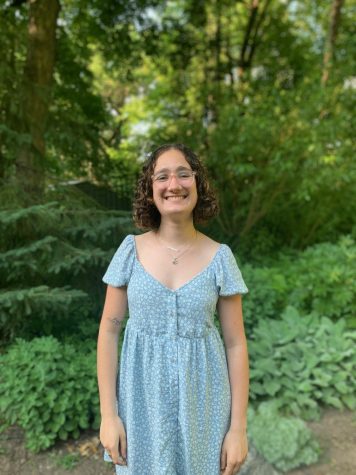“Jim Stewart’s Historical Tonic for Fragile White Folks” addresses history of white supremacy in the U.S.

November 12, 2020
Professor emeritus of history Jim Stewart wants to explain white supremacy. To do that, he created the video series “Jim Stewart’s Historical Tonic for Fragile White Folks.” Through the series of free videos available on YouTube, Stewart documents the history of white supremacy in America with hopes of educating everyone he possibly can.
In a video promo for the series, Stewart explains what viewers can expect through his deep dive into white supremacy. There are sixteen in total, all professionally produced.
“Each of [the videos] describes wrenching developments that usually get glossed over in the history textbooks, but that’s precisely why it’s so essential to know about them,” Stewart said.
“They also allow you to see much more clearly than you have ever seen before the tangles of white supremacy that ‘back then’ has left for us,” he continued. “And, best of all, they tell you more than you ever knew before about how to begin unwinding them.”
The title of the video series is inspired by the patent medicines, usually called tonics or elixirs, that existed between the end of the American Revolution and the early 20th century — the period of history Stewart specializes in.
“It’s a riff on an old kind of advertising that makes it have a historical reference point, and at the same time it’s kind of catchy and grabby and everybody wonders what the hell it is — I hope,” Stewart said.
Each video is between six and fifteen minutes long, which Stewart believes will help make the videos more accessible and digestible for viewers who are not scholars or students of American history.
“The idea of trying to democratize this knowledge without watering it down, and without making it easy, but trying to present it in a way that is really user friendly, is a way for white folks to talk to white folks,” he said.
In creating the series, Stewart was aware of what he terms “historical amnesia” in the context of the younger American generation — a lack of curriculum in schools today on the history of white supremacy, along with a tendency by many Americans to only see the history they want to. Stewart sees his videos as a way to challenge this amnesia.
“The tonic is designed to get people to see the history, to own the very awful, terrible history — there’s a big piece on lynching, there’s a big piece on urban race riots, there are all kinds of stuff sitting in there that [are] really really horrible,” Stewart said.
“My job is to present it in a way so that people see it for what it is without recoiling from it or re-victimizing the people who were victimized in the first place.”
Connecting the videos to the current state of the COVID-19 pandemic, Stewart believes that his videos can create a concrete lesson on living in society today.
“I think especially at a time when it is so hard to socialize and so hard to converse, the idea of being able to feel like you are in touch with something tangible that’s really important, that you didn’t know before, that’s not hard to learn, not hard to share, makes, I hope, you feel better positioned in this crazy world that you have to look at,” he said.
Beyond the content of the videos, Stewart hopes that the series will have a large national impact that grows as people share it on social media, with their friends or with their family. Most importantly, he wants the videos to have an impact in the Twin Cities area, specifically at Macalester.
“Fundamentally, I would like to have it be useful to the college,” he said. “My hope is that if I affect the campus with the thing, it will become identified with the college, it will support the college’s efforts to do a lot of other big initiatives that give it an identity and give it focus and give it authenticity.”
“I would love for the heartbeat of this thing to come from here,” he said.
Watch the complete series on YouTube here.













